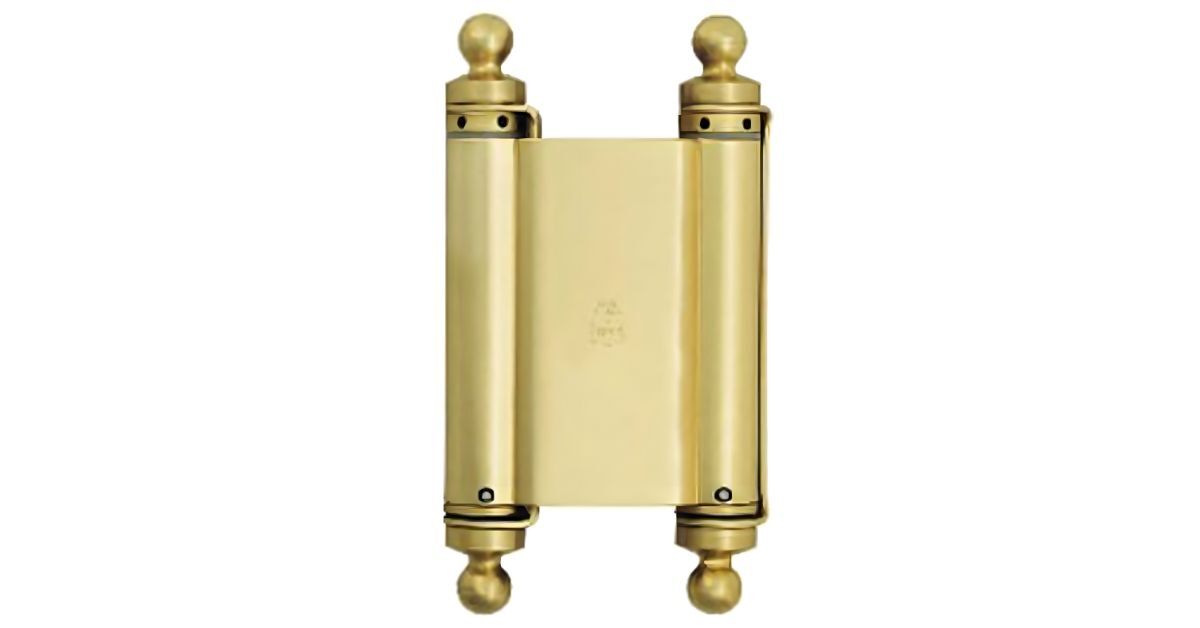
The Fascinating Evolution of Door Hinges and Cafe Doors
The History of Door Hinges and How They Shaped the World
Doors are everywhere—from ancient temples to modern homes, they are an integral part of our built environment. Yet, often, the humble hinge, the essential hardware that makes opening and closing doors possible, goes unnoticed. The story of door hinges is much more than just about metal and motion. It is about human ingenuity, technological progress, and cultural development.
This blog on the history of door hinges and how they shaped the world traces their evolution from primitive beginnings through centuries of innovation, demonstrating their impact on engineering, security, and daily life. We’ll guide you through key milestones, the materials involved, notable technological advancements, and fascinating ways in which hinges have contributed to shaping societies and industries.
Ancient Origins of the Door Hinge
The earliest civilizations faced the daily challenge of securing and accessing spaces. Archaeological records indicate that the concept of attaching a barrier to a frame using a pivot mechanism dates back thousands of years. Egyptians are credited with some of the first known uses of crude hinges, dating back as early as 1600 BCE. Often, these ancient hinges were made from stone or simple wood, showcasing the Egyptians’ basic craftsmanship and practical problem-solving.
Roman and Greek societies further developed this trend by incorporating bronze and iron into their designs. Hinges from these periods show an increase in strength and decorative flair. Often, Roman doors, especially those used in temples and public buildings, featured robust hinges as symbols of stability and marvels of engineering. Some examples from Pompeii still survive, illustrating the durability and visual interest of these ancient mechanisms.
Medieval Advances in Hinge Technology
The Middle Ages marked a significant leap for hinge technology. During this period, gothic architecture surged in popularity across Europe, bringing with it larger, heavier doors that required more robust support systems. Blacksmiths responded by improving hinge strength and complexity.
Strap hinges emerged as a favored design, often reaching across the width of castle doors and fortified gates. Intricate scrollwork and patterns emerged, demonstrating that hinges could be both functional and aesthetically pleasing. Security concerns also led to solutions, such as the concealed hinge, which people could not readily tamper with from the outside.
Medieval hinges provided more than just functionality for doors. They played crucial roles in the design of chests, strongboxes, and religious arks, reflecting their importance in both public and private settings.

Industrial Revolution and Standardization
The Industrial Revolution brought about dramatic changes to every aspect of manufacturing, and hinges were no exception. Mass production enabled the creation of consistent, interchangeable hinge parts. Factories began producing hinges in a variety of styles including butt hinges, piano hinges, and eventually, spring hinges.
Wrought iron gave way to more flexible materials, such as steel and brass, which improved the hinge’s durability and aesthetics. The standardization of hinge sizes and the introduction of mechanical presses enabled designers to rely on predictable hardware, resulting in faster construction and improved quality control.
The widespread availability of hinges democratized their use, giving rise to new architectural possibilities in both residential and commercial construction. Doors became lighter and easier to operate, broadening their range and making innovative designs more accessible.
The Role of Door Hinges in Security
Door hinges have played a crucial role in ensuring security and privacy throughout history. Strong hinges have always been essential to safeguarding doors against intrusion. Early hinges kept storage rooms and city gates secure against threats.
Security features, such as non-removable pins and tamper-resistant screws, grew in popularity with the standardization of hinges in the 19th and 20th centuries. These additions allowed for greater peace of mind, both at home and in public buildings.
Hinges also contributed to fire safety. Fire doors, a requirement in many commercial spaces, rely on high-quality spring hinges to close automatically, containing fire and smoke. This innovative application of hinge technology demonstrates their evolving role as guardians of safety rather than just facilitators of movement.
Hinges and Everyday Convenience
We cannot overstate the extensive use of door hinges in daily life. Today, almost every door, window, cabinet, and even car contains hinges. Their continual development has led to smoother operation, reduced maintenance needs, and better accessibility for all users.
Often, modern interior design trends emphasize minimalist aesthetics. Now, hidden hinges allow for sleek, unbroken surfaces on doors and cabinetry. Soft-close technology, made popular in kitchens and luxury vehicles, prevents abrupt slamming and adds a new level of user comfort.
Smart homes also benefit from advancements in hinge technology. Automated and sensor-driven doors depend on specially-designed hinges capable of integrating with digital controls. The result is improved energy efficiency, enhanced security, and reduced noise.
Door Hinges Across Cultures and Continents
Different cultures have left unique marks on the history and design of hinges. For example, traditional Japanese architecture incorporates sliding panel doors (fusuma and shoji) where elaborate hinge systems are hidden within woodwork. Meanwhile, ornate Indian palaces feature massive bronze hinges adorned with symbolic motifs and religious imagery.
Cultural preferences dictate not only the decorative style but also the function. Pivot hinges, which allow doors to spin on a central axis, are popular in regions where floor plans permit wide, grand entrances. Hinges reflect local values, priorities, and craftsmanship, providing insight into the societies that created them.
Technological Innovations of the Modern Era
Innovation in hinge technology continues at a brisk pace. Material science advancements have led to lighter, stronger, and corrosion-resistant hinges made from alloys and high-performance plastics. Engineers now design hinges for aerospace, automotive, and even medical industries, where precision, reliability, and longevity are critical.
Smart home technology has fueled another wave of invention. Some hinges now incorporate sensors, soft-closing elements, and electronic controls for maximum customization. Security applications are also more sophisticated, with hinges installed in reinforced doors able to resist forced entry through improved design and advanced materials.
Sustainability occupies a key role in recent developments. Eco-friendly hinges made from recycled or renewable materials reduce environmental impact without sacrificing performance or aesthetics. This highlights the fact that even the simplest components can contribute to a greener future.

Symbolism and Meaning of Hinges
Beyond their functional importance, hinges have carried symbolic meaning in literature, religion, and popular culture. Ancient myths describe doors as gateways to other worlds, with the hinge as the pivot between the physical and the spiritual. Passing through a doorway has marked a rite of passage throughout history, with the hinge serving as a silent witness to these transformations.
Artisans have long used hinges as canvases for artistic expression, signaling wealth, craftsmanship, or even magical protection on important thresholds. Museums and private collections display centuries-old hinges alongside other decorative arts, honoring their dual status as utilitarian objects and cultural artifacts.
Bommer: A Legacy of Innovation in Door Hinges
For much of its history, the name Bommer was synonymous with high-quality, innovative hinges, particularly in the realm of double-action hinges. Founded in the late 19th century, Bommer revolutionized the way doors functioned, bringing ingenuity and craftsmanship to a once-overlooked component of construction. Bommer’s double-action hinges became a gold standard, prized for their durability, reliability, and precision design, which allowed doors to effortlessly swing both ways. These hinges found their way into commercial buildings, homes, and even iconic establishments, leaving an undeniable mark on the industry.
However, despite its storied past and well-earned reputation, Bommer eventually ceased operations. Recognizing the ongoing demand for reliable double-action hinges, Swinging Café Doors stepped up to remanufacture similar designs and hinges to the cherished Bommer hinges, ensuring that their legacy didn’t fade into history.
The Future of Door Hinges
Looking forward, the evolution of door hinges shows no signs of stopping. Research focuses on producing hinges that are lighter, stronger, and even smarter. Self-lubricating mechanisms ensure doors will open smoothly for decades. Anti-bacterial coatings respond to growing health awareness in public spaces and hospitals.
Home automation demands hinges that can communicate with other devices, adjusting motion and resistance in real time. Technological advances encourage interdisciplinary collaborations between engineers, designers, and software developers to push the limits of what a hinge can do.
Hinges in Retrospect: Small Object, Big Legacy
Reflecting on the history of door hinges and how they shaped the world underscores their remarkable role in building our physical and social spaces. What started as a simple pivot for a stone or wooden slab now enables everything from elegant home interiors to secure bank vaults and state-of-the-art smart homes.
